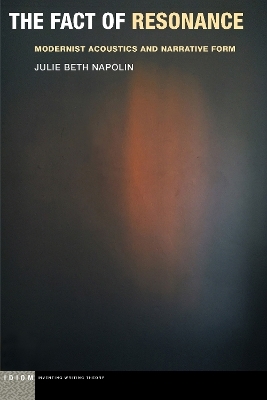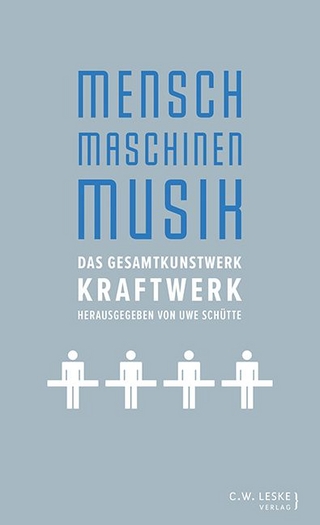
The Fact of Resonance
Fordham University Press (Verlag)
978-0-8232-8817-5 (ISBN)
Shortlisted, 2021 Memory Studies Association First Book Award
The Fact of Resonance returns to the colonial and technological contexts in which theories of the novel developed, seeking in sound an alternative premise for theorizing modernist narrative form. Arguing that narrative theory has been founded on an exclusion of sound, the book poses a missing counterpart to modernism’s question “who speaks?” in the hidden acoustical questions “who hears?” and “who listens?”
For Napolin, the experience of reading is undergirded by the sonic. The book captures and enhances literature’s ambient sounds, sounds that are clues to heterogeneous experiences secreted within the acoustical unconscious of texts. The book invents an oblique ear, a subtle and lyrical prose style attuned to picking up sounds no longer hearable. “Resonance” opens upon a new genealogy of modernism, tracking from Joseph Conrad to his interlocutors—Sigmund Freud, Frantz Fanon, W. E. B. Du Bois, William Faulkner, and Chantal Akerman—the racialized, gendered, and colonial implications of acoustical figures that “drift” through and are transformed by narrative worlds in writing, film, and music.
A major synthesis of resources gleaned from across the theoretical humanities, the book argues for “resonance” as the traversal of acoustical figures across the spaces of colonial and technological modernity, figures registering and transmitting transformations of “voice” and “sound” across languages, culture, and modalities of hearing. We have not yet sufficiently attended to relays between sound, narrative, and the unconscious that are crucial to the ideological entailments and figural strategies of transnational, transatlantic, and transpacific modernism. The breadth of the book’s engagements will make it of interest not only to students and scholars of modernist fiction and sound studies, but to anyone interested in contemporary critical theory.
Julie Beth Napolin is Assistant Professor of Digital Humanities in the Literature Program at The New School. She has published on sound, media, and literature in qui parle, Symploke, Sounding Out!, and Social Text and in such volumes as Vibratory Modernism, Sounding Modernism, and Fifty Years after Faulkner. In 2012 she was awarded a Bruce Harkness Young Scholar Award by the Joseph Conrad Society of America.
Note on Abbreviations | ix
Overture: The Sound of a Novel | 1
1 Voice at the Threshold of the Audible: Free Indirect Discourse
and the Colonial Space of Reading | 13
Coda: Chantal Akerman and Lip Sync as Postcolonial Strategy | 59
2 The Echo of the Object: On the Pain of Self-Hearing in The Nigger
of the “Narcissus” and “The Fact of Blackness” | 67
Coda: Literary History as Miscegenating Sound: The Sound and the Fury | 103
Intersonority: Unclaimed Voices Circum-1900, or Sound and Sourcelessness
in The Souls of Black Folk | 115
3 A Sinister Resonance: On the Extraction of Sound and Language
in Heart of Darkness | 149
Reprise: Reverberation, Circumambience, and Form-Seeking Sound
(Absalom, Absalom!) | 211
Acknowledgments | 231
Notes | 235
Bibliography | 309
Index | 331
| Erscheinungsdatum | 02.01.2020 |
|---|---|
| Reihe/Serie | Idiom: Inventing Writing Theory |
| Zusatzinfo | 10 |
| Verlagsort | New York |
| Sprache | englisch |
| Maße | 152 x 229 mm |
| Themenwelt | Kunst / Musik / Theater ► Musik ► Musikgeschichte |
| Geisteswissenschaften ► Philosophie | |
| ISBN-10 | 0-8232-8817-X / 082328817X |
| ISBN-13 | 978-0-8232-8817-5 / 9780823288175 |
| Zustand | Neuware |
| Haben Sie eine Frage zum Produkt? |
aus dem Bereich


